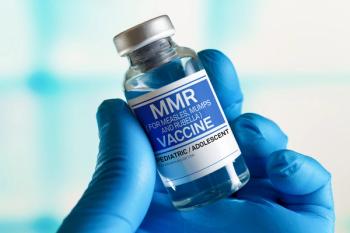
Should Topical NSAIDs Have Strict Heart Risk Warnings?
Is there a need to strengthen the labeling of topical NSAIDs that clearly lack systemic therapeutic or toxic levels?
The FDA is now
One of the most concerning findings that the FDA described is “the risk of heart attack or stroke that can occur in the first weeks of using NSAID” therapy.
NSAIDs are effective because they inhibit cyclooxygenase (COX)-1 and -2 in the arachidonic acid cascade to various extents. The COX-1 pathway produces prostaglandin E2, thromboxane A2, and prostacyclin, which causes changes in the stomach, intestines, kidneys, platelets, and endothelium. COX-2 is present at inflamed sites and works by creating inflammatory prostaglandins, proteases, and radical oxygen species causing inflammation.1 Therefore, COX-1 is needed in order to maintain daily function of various organs, and it is intuitively better to avoid blocking COX-1, while preferentially blocking COX-2 in order to address pain, inflammation, and fever.
By taking a COX-2-specific inhibitor, patients should obtain relief from pain and inflammation with a decreased risk of gastrointestinal and cardiovascular problems. But experience shows that when you upset nature, there may be other inherent risks.
In this case, by selectively inhibiting COX-2, the cascade is skewed towards thromboxane A2 in the COX-1 pathway, which in a negative feedback loop increases prostacyclin that encourages clotting and elevates the risk of thromboembolism.2
Irrespective of their route of administration, all NSAIDs now require a templated FDA warning about the risks of heart attack, stroke, and renal damage. Interestingly, topical steroids do not carry this warning.
Is there a need to strengthen the labeling of topical NSAIDs that clearly lack systemic therapeutic or toxic levels? There are many formulations, such as nasal solutions, optic solutions, gels, creams, and patches, that are designed to release the drug locally, but not systemically.
So, how localized is it? How much of the drug reaches the systemic circulation? Is there even enough in the circulation to support current warnings or harsher warnings, particularly when there already seems to be a massive migration away from opioids?
Diclofenac is a great example to consider because it has multiple vehicles of administration, including ophthalmic solution (Voltaren Ophthalmic Solution), topical solution (Pennsaid), 1% gel (Voltaren Gel), 3% gel (Solaraze), topical patch (Flector), and tablets. It is also the most commonly prescribed NSAID worldwide.3
Diclofenac is fairly COX-2 selective compared to other “traditional” NSAIDs. For example, the drugs available on the US market in respective order of COX-2 specificity are etodolac, meloxicam, celecoxib, and diclofenac.
When diclofenac 1% sodium gel was approved by the FDA in 2007, it became the first topical NSAID to hit the market (other than topical salicylates and derivatives), followed by diclofenac sodium 1.5% topical solution in 45.5% dimethyl sulfoxide in 2009.4
Topically applied medications can be designed to either act locally at the application site or be absorbed through the dermal layers with a desired systemic effect. Topical treatments are for local application and include patches, creams, gels, ointments, and solutions. Transdermal administration is designed to achieve systemic therapeutic concentrations similar to injectable or orally administered drugs.5
The diclofenac patch (Flector) is approved for minor sprains, strains, and contusions. According to the Flector package insert, after 10 to 20 hours, the plasma concentration is 0.7 ng/mL to 6 ng/mL, and after 5 days with twice-daily dosing, it is 1.3 ng/mL to 8.8 ng/mL. The systemic exposure on day 4 is less than 1% of “a single oral 50-mg diclofenac sodium tablet.”
Exercise was also tested to see whether sweat would affect absorption, but “no clinically relevant differences in systemic absorption were observed.” Even if some of the diclofenac reaches the blood, it has greater than 99% affinity for albumin, which essentially renders it unavailable for activity.
Diclofenac is primarily metabolized by CYP2C9 and has a half-life of approximately 12 hours, meaning it is fundamentally out of the body in about 60 hours (5 half-lives), with about 65% of the metabolites being excreted in the urine and about 35% in the bile. Each patch contains 180 mg of diclofenac epolamine.6
Pennsaid is diclofenac topical solution that is used for osteoarthritis of the knee. It has a maximal dosing of 40 drops (~1.2mL) to each knee. Considering the package insert data for normal adults aged 18 to 55 years taking 4 doses daily for 7 days, the area under the curve (AUC0-t) is 965.4 ± 348.9 ng hr/mL, AUC0-inf is 745.2 ± 374.7 ng hr/mL, maximum plasma concentration (Cmax) is 19.4±9.3 ng/mL, time when Cmax is observed (Tmax) in hours (hr) is 4.0±6.5, and plasma half-life (t1/2) (hr) is 79.0± 0.004.
The point of all these nice numbers is that the topical solution Cmax (say 19.4±9.3)=28.7 ng/mL compared to 50-mg tablets 3 times daily with Cmax of 2270 ng/mL is that the solution has only ~1.26% of the Cmax of the tablets. The AUC of the topical solution at (745.2±374.7) 1119.9 ng hr/mL vs tablet at (3890±1710) 2180 ng hr/mL is 51.4%.
The package insert states that Pennsaid given 4 times daily for 1 week has approximately one-third of the systemic exposure as diclofenac sodium 3% gel (Solaraze) given twice daily for 4 weeks. Pennsaid did not affect platelet aggregation after 7 days at the maximum dose.7
Diclofenac sodium ophthalmic solution 0.1% (Voltaren Opthamic) can be used in cataract surgery with 1 drop given 4 times daily for 2 weeks after surgery or for corneal refractive surgery with 1 to 2 drops given 4 times daily for 3 days. Pharmacokinetic data is lacking because, after instilling 2 drops in each eye over a period of 4 hours, it was below the measurable limit of 10 ng/mL. This indicates that even if the medication is absorbed through the eye vasculature, the systemically absorbed amount is so low that it is unmeasurable.8
Diclofenac sodium 1% gel (Voltaren) was given to healthy volunteers over the course of 7 days at 48 g/day (480 mg diclofenac). Usually, 50-mg tablets are used 3 times daily for osteoarthritis (150 mg/day). When given 48 g/day, the highest Cmax for the gel was 53.8 ± 32 ng/mL at Tmax of 10 hr with an AUC0-24 of 807± 478 ng hr/mL The diclofenac tablet had a Cmax of 2270 ng/mL at Tmax of 6.5 hr and AUC0-24 of 3890±1710 ng hr/mL.
Thus, the gel only had a Cmax of 2.2% [1.9-2.6 confidence interval (CI)] and an AUC of 19.7% (17-22.8 CI) compared with the tablet. The above data is reflective of an overzealous, non-compliant patient applying way too much, as the recommended daily limit is 32 g/day. For a patient who is using 4 g and dosing 4 times daily to 1 knee, the systemic exposure is 17 times lower than taking a 50-mg tablet 3 times daily.
The key takeaway is that “the average peak plasma concentration with recommended use of Voltaren gel (4 x 4 g per day applied to 1 knee) is 158 times lower than with the oral treatment.”9
Diclofenac sodium 3% gel (Solaraze) is approved for lesions due to actinic keratosis (AK) and superficial thrombophlebitis, and it can be placed on scalp, forehead, face, forearm or hand. Even if the patient had issues with skin integrity, such as atopic dermatitis, only 10% of the applied dose of Solaraze (2g over 100 cm2) is absorbed systemically after 7 days with 4 times daily application.
Tests indicate an AUC0-t 9±19 ng hr/ml with Cmax of 4±5 ng/mL and Tmax of 4.5±8 hr after 2 g is applied to the calf 3 times daily for 6 days on healthy subjects. For reference, taking 1 dose of 75-mg diclofenac tablet yields AUC of 1600 ng/hr/ml; Solarize has only ((9+19)/1600=) 1.75% the AUC! Trials on patients with AK lesions indicate that giving 0.5 g twice daily for up to 105 days yields levels averaging at or below 20 ng/mL.10
Keep in mind that Voltaren is roughly 320 mg diclofenac daily, whereas Solaraze is only 15 mg per half gram, so there would need to be ~10 lesions each measuring 25 cm2. You may be confused about this, but remember the data for Voltaren gel describe when it is being used at 1.5 times the recommended quantity, which is 32 g/day, and Solarize is recommended at only 0.5 g of gel for each 5x5 cm area.
For a side-by-side comparison, see the Diclofenac Dosage Form Table below.
Diclofenac Dosage Forms
Brand Name
Form
Strength
Dose
Cmax (ng/mL)
Tmax (hr)
AUC (ng hr/mL)
Diclofenac (Voltaren, Cataflam, generic) 9
Tablets
50 mg
TID
2270 ± 778
6.5
3890 ± 1710
Voltaren 9
Gel
1%
48 g/day*
53.8 ± 32
10
807 ± 478
Solaraze 10
Gel
3%
2 g TID x 6 days
5±5
4.5±8
9±19
Flector 6
Patch
1.3%
BID x 5 days
1.3 - 8.8
120
96
Pennsaid 7
Topical Solution
1.5% w/w
QID x 7 days
19.4 ± 9.3
4.0 ± 6.5
745.2 ± 374.7
Voltaren Ophthamic 8
Ophthalmic Drops
0.1%
2 drops over 4 hrs
<10
NA
NA
* This is above the maximum daily dose recommended
In other words, all topical vehicles of diclofenac delivery result in only a small fraction of the diclofenac that actually reaches the systemic circulation compared with the oral route. With such a low percentage, do you think the FDA is correct in requiring these delivery mechanisms to have the same warning as the oral tablets?
The easiest way to answer that is pointing out the ophthalmic drops, which cannot even be measured in the plasma. The FDA admitted that “newer information is not sufficient for us to determine that the risk of any particular NSAID is definitely higher or lower than that of any other particular NSAID,” which is why it stated that NSAIDs may have an “increased risk range from 10% to 50% or more.”
Pehaps the FDA should require all NSAIDs to warn that there is no evidence to support topical products carrying the same risks as orally administered ones. Maybe the agency should ensure that all topical NSAIDs, plus salicylates and topical steroids, are treated fairly and equal. After all, it would seem that the 2 latter options are far more toxic, but they lack the warning required of all NSAIDs regardless of administration route.
Adding such warnings, especially on topical products, may curtail clinicians from treating any pain problems, since opioids and acetaminophen also have inherent risks. Clinicians may need to use common sense, stay practical, and keep repeating the old adage, “absence of evidence is not evidence of absence."
This article was collaboratively written with Phillip Boglisch, a 2016 PharmD candidate at the Western New England University (WNEU) College of Pharmacy in Springfield, MA, and an MBA candidate with expected conferment, fall semester 2015 at WNEU College of Business. He completed his undergraduate degree at Clark University in Worcester, MA, where he obtained a BA in Chemistry in 2012. He is interested completing a PGY1 and possibly a PGY2 residency, and he is currently under the mentorship of Dr. Fudin studying pain management.
This article is the sole work of the authors and stated opinions/assertions do not reflect the opinion of employers, employee affiliates, and/or pharmaceutical companies listed.
References
1. Hwang SH, Wecksler AT, Wagner K, Hammock BD. Rationally designed multitarget agents against inflammation and pain. Curr Med Chem. 2013; 20 (13):1789-99.
2. Schafer AI. Effects of Nonsteroidal Antiinflammatory Drugs on Platelet Function and Systemic Hemostasis. J Clin Pharmacol. 1995 35: 209-219.
3. Atkinson TJ, Fudin J, Pandula A, Mirza M. Medication Management in the Elderly: Unique and Underutilized Treatment options. Clinical Therapeutics. 2013 Nov. Vol. 34, Pages 1669-1689.
4. Balmaceda: Evolving guidelines in the use of topical nonsteroidal anti-inflammatory drugs in the treatment of osteoarthritis. BMC Musculoskeletal Disorders 2014 15:27.
5. McPherson, ML. Topical NSAID Formulations. Pain Med. 2013; 14: S35-S39.
6. Flector [package insert]. Bristol, TN: King Pharmaceuticals, Inc.; 2012.
7. Pennsaid [package insert]. Hazelwood, MO: Mallinckrodt, Inc.; 2013.
8. Voltaren Opthamic [package insert]. Fort Worth, TX: Novartis Pharmaceutical Corporation; 2012.
9. Voltaren [package insert]. Parsippany, NJ: Endo Pharmaceuticals, Inc.; 2014.
10. Solaraze [package insert]. Melville, NY: PharmaDerm; 2012.
Newsletter
Stay informed on drug updates, treatment guidelines, and pharmacy practice trends—subscribe to Pharmacy Times for weekly clinical insights.














































































































































































































